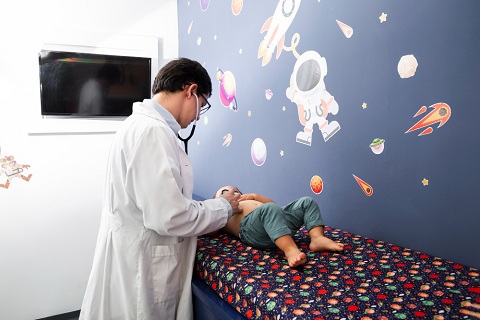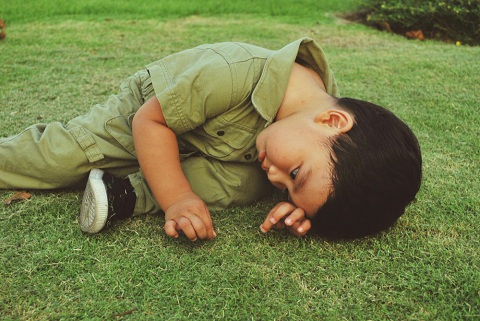Infantile convulsions, also known as infantile seizures, are a distressing condition characterized by sudden, uncontrolled movements and changes in behavior in infants and young children. These episodes can be alarming for parents and caregivers, prompting the need for understanding ongoing support.
Causes
- Congenital hydrocephalus: Newborn baby is an abnormal accumulation of cerebrospinal fluid in the brain, which can cause increased pressure and enlargement of the baby’s head and it may creat convulsion.
- Febrile Seizures: Often triggered by fever, especially in young children.
- Infections: Neonatal infection including such as meningitis or encephalitis, HIV infection, congenital syphislis, Tetanus neonatorum etc.
- Metabolic Disorders: Abnormalities in metabolic processes can lead to seizures.
- Genetics: Certain genetic factors may predispose a child to convulsions.
- Birth Injury: Birth injury commonly from forceps delivery.
Symptoms
Infantile convulsions can manifest in various ways:
- Anoxia: Anoxia in a newborn or infantile baby can lead to symptoms such as difficulty breathing, pale or bluish skin, weak muscle tone, and altered consciousness.
- Generalized Tonic-Clonic Seizures: Involving stiffening and jerking of the body.
- Deficiency diseases: Deficiency diseases in newborn or infantile babies can cause symptoms such as poor growth, weakness, fatigue, and developmental delays.
- Absence Seizures: Brief lapses in awareness or staring spells.
- Congenital defects: Congenital defects in newborn or infantile babies can lead to symptoms such as abnormal physical features, developmental delays, organ malformations, and health complications.
- Partial Seizures: Affecting only part of the body or specific functions.
- Infectious diseases: Infectious diseases in newborn or infantile babies can cause symptoms such as fever, cough, congestion, rash, and difficulty feeding or breathing.
- Post-vaccinal encephalopathy: Post-vaccinal encephalopathy in newborn or infantile babies can cause symptoms such as fever, seizures, irritability, and changes in consciousness or behavior following vaccination.
- Gastrointestinal issues: Gastrointestinal issues in newborn or infantile babies can lead to symptoms such as vomiting, diarrhea, abdominal pain, bloating, and poor weight gain.
Diagnosis

Medical professionals diagnose infantile convulsions through:
- Medical History and Physical Examination: Understanding the child’s health and any predisposing factors.
- Electroencephalogram (EEG): Monitoring brain activity for abnormal patterns.
- Blood Tests and Imaging Scans: Identifying underlying causes or abnormalities.
Prevention and Management
- Identifying Triggers: Recognizing and avoiding factors that can precipitate seizures.
- Seizure Action Plans: Developing strategies for responding to convulsions.
- Safety Measures: Ensuring a safe environment at home to prevent injuries during seizures.
Impact on Families
Infantile convulsions can have significant emotional and psychological effects on families, necessitating:
- Emotional Support: Counseling and support groups for coping with stress and anxiety.
- Education: Providing information and resources to understand and manage the condition effectively.
Research and Advancements
Ongoing research aims to:
- Explore New Treatments: Including gene therapies and targeted interventions.
- Enhance Prevention Strategies: Identifying risk factors and early intervention methods.
FAQs about Infantile Convultion
Infantile spasms can be caused by various factors, including brain abnormalities, genetic disorders, metabolic imbalances, or structural issues in the brain.
With early diagnosis and appropriate treatment, some babies can recover from infantile spasms. However, the outcomes can vary, and prompt medical intervention is crucial for better prognosis.
Baby convulsions can manifest as sudden, uncontrolled movements such as jerking of the arms and legs, stiffening of the body, or repetitive movements. The appearance may vary depending on the type of convulsion and its severity.
The first stage of a convulsion typically involves an aura or warning signs, which can vary but may include changes in mood or behavior, sensory disturbances, or feelings of unease.
Vitamin B6 (pyridoxine) deficiency is known to cause convulsions, especially in infants and young children. This deficiency can result from inadequate dietary intake, malabsorption issues, or certain medical conditions.
Yes, infantile convulsions can have long-term effects on a child’s development. These effects may include cognitive impairments, learning disabilities, behavioral challenges, and in some cases, developmental delays. Early intervention and appropriate management are important for minimizing the impact of convulsions on a child’s development.
Conclusion
Infantile convulsions are a complex neurological condition that requires a comprehensive approach to diagnosis, prevebtion, and support. By understanding the causes, symptoms, and management strategies, families can navigate this challenging condition with resilience and access to evolving medical advancements.





